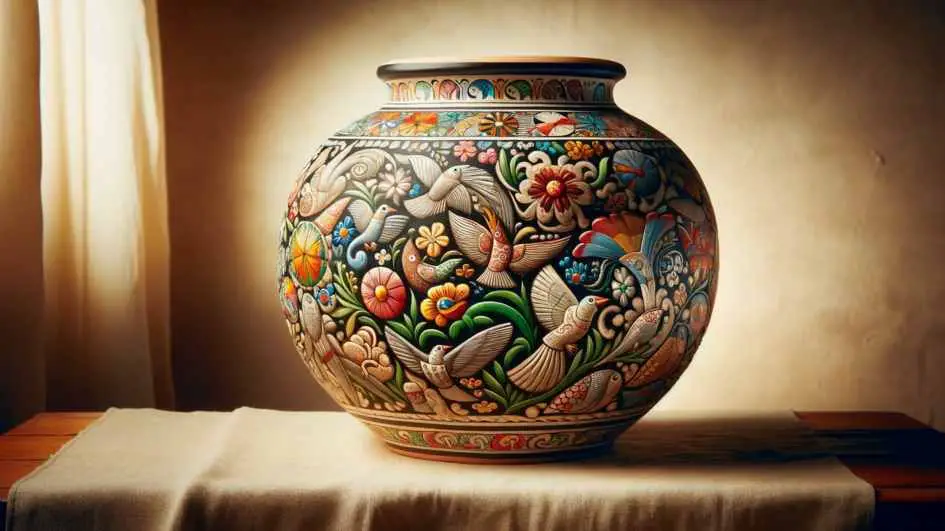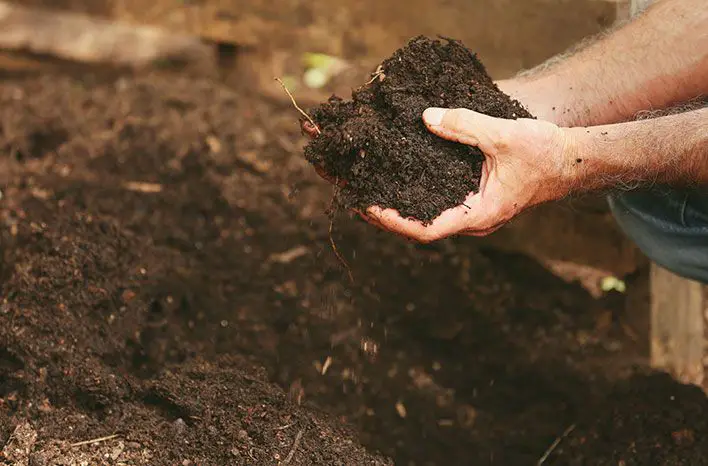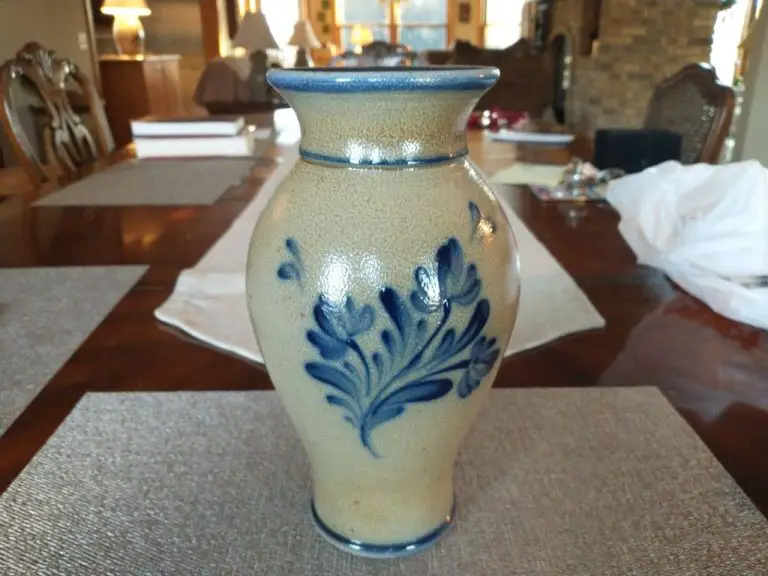What Culture Inspired Mata Ortiz Pottery?
Mata Ortiz pottery refers to a style of ceramics produced in the village of Mata Ortiz, located in the northern Mexican state of Chihuahua. The pottery is admired for its intricate painted designs and earthy colors, inspired by ancient Casas Grandes pottery of the Paquimé culture. Production began in the 1970s when resident Juan Quezada revived the tradition, experimenting to recreate the ancient techniques using local clay.
Mata Ortiz had been a near abandoned village until the pottery brought jobs and prosperity. Today, the pots are collector’s items and excellent examples of contemporary Mexican folk art. The quality and innovation of Mata Ortiz pottery has earned its reputation around the world.
Origins and Inspiration
The distinctive style of Mata Ortiz pottery finds its origins and inspiration in the ancient Casas Grandes pottery tradition of northern Mexico. Casas Grandes refers to a major prehistoric archaeological zone located in the modern day state of Chihuahua, which was home to the complex and vibrant Casas Grandes culture from around 1200 CE to 1540 CE. The Casas Grandes people produced beautifully crafted polychrome pottery featuring intricate geometric and abstract motifs.
This traditional Casas Grandes pottery style was revived in the mid 20th century by the pioneering potter Juan Quezada of Mata Ortiz village. Quezada dedicated himself to reinventing the ancient techniques and designs of Casas Grandes pottery, sparking a revival of this art form and transforming his remote village into a thriving hub for contemporary Casas Grandes-inspired pottery.
Juan Quezada
Juan Quezada Celado (born May 6, 1940; died December 1, 2022) was a Mexican potter known for the re-interpretation of Casas Grandes pottery known as Mata Ortiz pottery (Wikipedia). He was born to Jose and Paulita Quezada on May 6, 1940 in Santa Bárbara de Tutuaca, a small village near Mata Ortiz in northern Mexico (Artwork Archive).
Quezada grew up in a rural farming village. As a child, he found shards of ancient Casas Grandes pottery made by the Paquimé culture. He began experimenting with making pottery using similar materials and techniques. Quezada was essentially self-taught, learning through trial and error. He pioneered innovations in materials, tools, and methods to recreate the lost art of Casas Grandes-style pottery.
Techniques
The techniques used to create Mata Ortiz pottery are unique and help contribute to its distinctive style. The potters use materials that are locally available, such as natural clays from the surrounding Sierra Madre Occidental mountains. The clay is dug by hand, cleaned and prepared by removing rocks and other debris. It is then hand-mixed with sand temper from riverbeds to add strength and prevent cracking.
Coiling is the primary technique for shaping the vessels, building them layer by layer from the base up. The walls are carefully thinned using gourd scrapers, followed by stone polishing to create a smooth surface. Intricate patterns and designs are hand-painted using natural mineral and plant-based pigments like manganese, iron oxide and cochineal.
Firing is done outdoors using wood and manure for fuel. The pots are placed upside down and covered with recycled paper and animal dung, which smolders for several hours to harden the clay through low-temperature firing. This technique gives the pottery its signature black coloration.
The traditional production methods connect Mata Ortiz pottery back to its Native American roots. The skills have been passed down through observation and guidance from master potters like Juan Quezada. While locally sourcing materials, the potters have refined the techniques to craft lightweight, durable vessels.
Style
Mata Ortiz pottery is known for its distinctive and intricate patterns and designs. Many of the patterns are inspired by ancient Casas Grandes pottery and Native American motifs, but modern Mata Ortiz potters have also created their own innovative designs. Geometric patterns like diamonds, zigzags, and hexagons are common (Artisan Mata Ortiz Pottery: Designs and Techniques). Curvilinear patterns imitating birds, fish, snakes, and deer antlers are also prevalent.
Mata Ortiz artists use natural mineral paints to decorate their pottery. The paints are made by gathering clays of different colors from the surrounding mountains and grinding them into a fine powder. Common colors include black made from manganese, white from kaolin, red from iron oxide, and yellow from ocher (Superlative Mata Ortiz Pottery Designs-Tile Art Mural). After firing, the paints fuse permanently to the clay.
Economic Impact

The revival of pottery making in Mata Ortiz has had a tremendous economic impact on the formerly impoverished town. As Juan Quezada taught the craft to others in the 1970s, pottery making spread rapidly. Today there are over 300 potters in Mata Ortiz, with the artisans able to earn a middle-class living from their work (Source).
Whereas Mata Ortiz had been nearly abandoned in the mid-20th century due to lack of economic opportunities, it is now a thriving hub of artisanal production. Pottery sales at stores in Mata Ortiz, neighboring towns, and cities across Mexico and the United States provide a steady source of income for local families. The success of Mata Ortiz pottery has inspired a cultural and economic renaissance.
Popularity and Reputation
Mata Ortiz pottery rose to international fame starting in the 1980s and 1990s. The pottery has been featured in art galleries and museums around the world including the Smithsonian Institution and Metropolitan Museum of Art in New York (https://mexiconewsdaily.com/travel/mata-ortiz-a-tiny-town-with-a-big-reputation-for-its-pottery/).
Juan Quezada, the founder of the Mata Ortiz pottery tradition, received Mexico’s prestigious National Arts and Sciences Award in 1984. Since then, many other Mata Ortiz potters have gone on to gain recognition. Lydia Quezada Celado, Juan’s wife, was the first woman from Mata Ortiz to win the award in 1993. Potters such as Macario Ortiz, Nicolas Ortiz, and others have also won national awards (https://stanfordmag.org/contents/the-treasure-of-mata-ortiz).
The high quality and artistry of Mata Ortiz pottery has brought it much acclaim. Mata Ortiz potters have even been compared to famous painters like Picasso for their creative talents. The pottery is highly sought after by collectors around the world.
Comparison to Native American Pottery
There are many similarities between Mata Ortiz pottery and traditional Native American pottery, specifically from the Pueblo tribes of the American Southwest. Mata Ortiz pottery mimics the natural clay colors, matte finishes, geometric and animal motifs, and handmade techniques of Pueblo pottery (https://www.native-potterylink.com/mata-ortiz-pottery/ph85-mata-ortiz-gerardo-tena-olla). Common design elements include birds, deer, clouds, rain, and geometric patterns that reflect the natural world and culture of the Pueblo peoples. Both use only natural clays and pigments derived from the earth to create their color palettes.
However, there are also key differences. Mata Ortiz pottery is created in a Mexican village, while Pueblo pottery hails from Native American tribes in New Mexico and Arizona. Traditional Pueblo pottery is made by women, while in Mata Ortiz it is mainly crafted by men. Pueblo pottery uses traditional Native American methods like coil and scrape techniques, while Mata Ortiz has adapted some wheel throwing into the process. Mata Ortiz pottery also utilizes a wider variety of contemporary shapes and forms beyond the customary native styles.
There is certainly cross-influence between the two styles. Juan Quezada was inspired by ancient Paquimé pottery and artifacts as well as contemporary Native American pottery to spark the Mata Ortiz revival. Many Mata Ortiz potters continue to reference Native American pottery books and museums for inspiration on shapes, motifs, designs, and styles (https://alltribes.com/mata-ortiz-pottery/). The international popularity of Pueblo pottery likely also increased interest in the similar wares from Mata Ortiz.
Future Outlook
The future sustainability of the Mata Ortiz pottery tradition relies heavily on passing down knowledge to new generations of potters. Juan Quezada worked hard to revive the tradition in the 1970s, and now his successors must ensure it continues. Many of Quezada’s family members, including his wife Lydia, son Nicolas, and others, have become master potters themselves. They are teaching a new wave of young potters to carry on the tradition.
The town now has around 300 potters, with families specializing in certain styles and techniques. Children often start learning at a young age by watching family members. While the global popularity of Mata Ortiz pottery has been beneficial economically, some worry that catering to commercial tastes may cause potters to veer away from traditional designs and methods. However, there remains a strong sense of pride in continuing their unique ceramic tradition. As long as the community commitment persists, Mata Ortiz pottery is likely to be passed down for generations to come.
Conclusion
Mata Ortiz pottery has its roots in ancient Casas Grandes pottery, which was revived in a brilliant way by Juan Quezada in the 1970s. The potters of Mata Ortiz have continued this tradition using the ancient techniques of making pottery without a wheel and firing the vessels in an open fire pit. The unique style combines geometric patterns and earthy colors to create a distinctive regional artform.
Mata Ortiz pottery has had a profound positive economic and cultural impact, providing jobs and income for families in this small town in Mexico. As its reputation has spread internationally, it has become one of Mexico’s most famous indigenous crafts. While production has increased to meet demand, the Mata Ortiz potters remain committed to the traditional techniques and high quality that make their pottery so special.
It is important that this folk art tradition be sustained and passed down to future generations. The handmade methods used to create Mata Ortiz pottery should be preserved, so that this unique ceramic style endures and continues to reflect the heritage of the people of this region.



